
While the ultimate goal is to win the battle to end the famine, you could be forgiven for thinking that you are watching a reality cooking show. Below the peak of Bwabwa Mountain in Malawi, in a village on a tributary of the Rukuru River, around 100 people gather around pots and pans. Children crowd around a large mortar, sneering at attempts by their fathers, uncles and neighbors to pound soybeans into soymilk. In another station, a village elder is introduced by a man half his age to the virtues of sweet potato fritters. Yet another, a woman teaches a neighbor how he could turn sorghum into nutritious porridge. Community organizer Anita Chitaya oversees it all, with the skill of a leader, the energy of a children's animator and the determination of a sergeant. After helping a group with a millet sponge bread, she moves on to share a tip on how soy and kidney bean puree can be turned into patties by the enthusiastic young hands of children who would usually never volunteer. to eat beans.
There is an air of playful competition. Indeed, it is a competition. At the end of the afternoon, the food is shared and there are prizes for both the tastiest food (donuts win hands down) and the food most likely to be added to the people's daily diet (porridge triumphs because although everyone loves fried food, donuts are painful to cook, and oil is very expensive).
It's a recipe day in Bwabwa, a village of about 800 people in northern Malawi. These festivals are sociological experiments aimed at reducing domestic inequalities and are part of a multifaceted approach to ending hunger called agroecology. Academics describe it as a science, a practice, and a social movement. Agroecology combines ecology and social sciences with the creation and management of sustainable food systems and involves 10 or more interconnected principles, ranging from maintaining soil health and biodiversity to increasing equity. gender and intergenerational. More than eight million farmer groups around the world are experimenting with it and finding that, compared to conventional agriculture, agroecology is able to sequester more carbon in the soil, to use water in a more efficient way. more frugal, to reduce dependence on external inputs by recycling nutrients such as nitrogen and phosphorus and to promote, rather than destroy, biodiversity in the soil and on farms. And on all continents, research shows that farmers who embrace agroecology have greater food security, higher incomes, better health and lower debt levels.
Chitaya told me that at the turn of the millennium, when the farmers in Bwabwa were still practicing conventional agriculture, “there were times when we couldn't eat for days. My first child was suffering from malnutrition. Today his oldest son, France, is a very healthy teenager, helping teach other boys how to cook. The pediatric malnutrition clinic near Bwabwa has closed due to a lack of cases, although across Malawi, more than a third of children under five suffer from delayed physical development due to the malnutrition. Despite the COVID-19 pandemic, the devastating economic effects of which have exacerbated malnutrition around the world, agroecology continues to help Bwabwa escape hunger.
Yet when policymakers participate in a United Nations summit on food systems in fall 2021 (COP 26), agroecology will not be part of the solutions put on the table to fight world hunger. Among the summit's sponsors are the Gates Foundation, whose preferred solution is a set of technologies modeled on the Green Revolution. Despite ample evidence that the Gates Alliance for a Green Revolution in Africa has failed, one of his main acolytes from Rwanda will chair the UN summit. Advocates of agroecology, such as the Alliance for Food Sovereignty in Africa , which represents 200 million food producers and consumers, have too few resources and financial means to have an impact on a process that is increasingly muzzling them. the speech.
To end hunger, it takes more than just removing more food from the ground; this implies fighting against entrenched power hierarchies. Over the past decade, food production has generally exceeded demand - there is more food per person than there ever was. But due to global and regional inequalities, exacerbated by the recent pandemic, famine levels are higher today than in 2010. In other words, more food has accompanied more hunger. People are deprived of food not because it is scarce, but because they lack the power to access it.
 Drinking water and cooking comes from a community tube well in Bwabwa. But climate change is lowering water levels in the area, often requiring long walks to carry the water home. Credit: Thoko Chikondi
Drinking water and cooking comes from a community tube well in Bwabwa. But climate change is lowering water levels in the area, often requiring long walks to carry the water home. Credit: Thoko Chikondi
The global food system was originally established under colonialism, when the patterns of agriculture and land ownership of much of the tropical world were reconfigured, and tens of millions of slave and bonded laborers were dispatched. around the world to supply Europeans with sugar from cane and other tropical crops they had developed a taste for. Far from ending with colonialism, however, this system of food extraction has only grown stronger due to the conditions attached to loans from international financial institutions such as the World Bank and the International Monetary Fund (IMF). To pay off its debts, Africa now exports everything from roses to broth.
Agroecology frees the world's poorest farmers from these structures of control and transfers the balance of power in the global food system to people like Chitaya, one in billions who reside at the bottom. of the socio-economic pyramid. No wonder, then, that it is unpopular with mainstream farm businesses, northern governments and the organizers of the Food Systems Summit. Its recognition that systemic problems require systemic solutions makes agroecology a threat.
HUNGER IN MALAWI
In a lifetime of trying to figure out why there is hunger and what could be done about it, I have traveled inside organizations like the UN and the World Bank to speak out against the decisions. outside and inside the World Trade Organization. Over the past decade, however, I have also received a science education from some of the poorest farmers in the world.
My first visit to Bwabwa was in 2011, at the invitation of my graduate friend Rachel Bezner Kerr. Now a professor of development studies at Cornell University, Bezner Kerr had arrived in Malawi a decade earlier to find himself in the midst of an economic crisis. Malawi suddenly cut fertilizer subsidies - and so too, as the HIV / AIDS pandemic wreaked humanitarian and economic havoc. The farmers, most of whom were engaged in industrial agriculture, which requires expensive chemical inputs, were in despair. Bezner Kerr wanted to make herself useful as she developed a masters project. She therefore sought the most disadvantaged families to support in her research. She had the chance to meet Esther Lupafya, a nurse who ran the maternal and child health program at a clinic in the small town of Ekwendi. Together, they identified farmers, including Chitaya, who were willing to try a different kind of farming, which would free them from dependence on the global agribusiness and its allies.


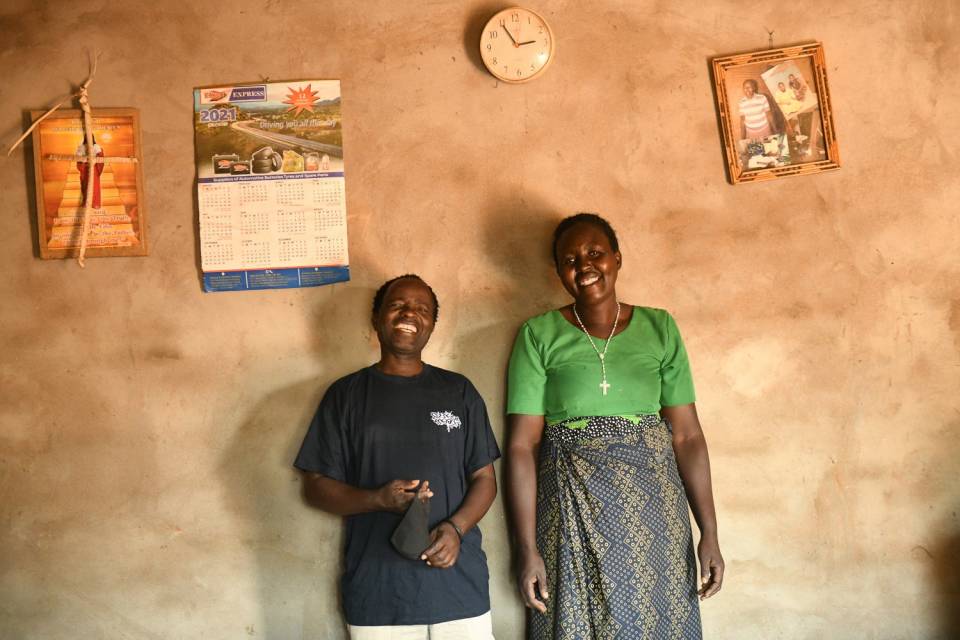 Experiments with unfamiliar cultures (top) and recipes helped the villagers of Bwabwa to eat healthy foods. The same goes for gender equality, which reduces the burden on women. Winston Zgambo helps Anita Chitaya make bean flour donuts (center). Her husband, Christopher Nyoni (bottom), also cooks, traditionally women's work. Credit: Thoko Chikondi
Experiments with unfamiliar cultures (top) and recipes helped the villagers of Bwabwa to eat healthy foods. The same goes for gender equality, which reduces the burden on women. Winston Zgambo helps Anita Chitaya make bean flour donuts (center). Her husband, Christopher Nyoni (bottom), also cooks, traditionally women's work. Credit: Thoko Chikondi
Getting to Bwabwa involves a six hour drive north of Malawi's capital, Lilongwe. Lined with signs announcing the plans of several non-governmental organizations and foreign aid institutions, the northern road from Lilongwe Airport runs along the eastern shore of Lake Malawi, the third largest freshwater lake on the continent. After passing the largest town in northern Malawi, Mzuzu, with its six-story Bank of Malawi building, and the smaller town of Ekwendeni, you follow dirt roads to reach Bwabwa. While the large, flat, irrigated fields off the main highway are neat monocultures of maize, the fields near the village are drier, smaller, sloping from all angles, and filled with twirling thickets of different crops, each suitable. to the needs of the family which maintains it and to the capacity of this particular field to work in an ecological way.
Northern Malawi hasn't always looked like this. The first white man to visit him was the Scottish Presbyterian David Livingstone in 1858. His missionary campaign led to the establishment of the British protectorate of Central Africa, which later became Nyasaland. Photographs from the time show the scrubland. British farmer BE Lilley looked at Malawi in the 1920s and said: "The time has not come when the native can be seen as a person who can be relied on to raise produce in any country. no matter what measure [as] the white man raises them. Similar attitudes persist to this day, although they are now formulated in contemporary language.
Eager to wrest what they could of the colony's resources, the British began exporting ivory and forest products, switching to crops that would transform the land and economy of Malawi: tea, cotton. , sugar and tobacco. The settlers took over the land, but they needed workers, so they imposed a hut tax, an annual fee for households payable in cash. Initially, families paid the settlers by selling their reserves of wealth, usually cattle, until there was nothing left to liquidate. Then they sent able-bodied men to sell their labor to the Malawian plantations and mines further south. Debt has turned self-sufficient farmers and pastoralists into manual laborers, forcing them to toil for poverty.
Debt has also made Malawi a pawn for its creditors. Malawi became independent in 1964, then spending the next 30 years under the autocrat Hastings Banda. Western donors have rewarded his iron-fisted regime with high-dollar loans to support the country's industrial development while ignoring worsening malnutrition. These loans have become the instruments of hunger in Malawi, and indeed in Africa. In the early postcolonial period, Africa was a net exporter of food, selling 1.3 million tonnes per year from 1966 to 1970. But the oil price crisis of the 1970s forced African governments to borrow more. more to the World Bank and the IMF. These so-called structural adjustment loans came with stringent conditions that, among other measures, reduced public spending on education and health care and privatized national assets. In addition, African countries were ordered to focus on exports of colonial-era crops, which would generate the dollars with which they could repay their debts.
Despite paying an average of $ 100 million per year to its creditors throughout the 1980s, Malawi remains one of the most indebted countries on the planet. Worse yet, devoting the richest land to cash crops for export, instead of food crops for subsistence, meant that structural adjustments had transformed Africa by the 1990s into an importer of a quarter of its food. Between 2016 and 2018, Africa imported 85% of its food from outside the continent, a crippling dependency.
TEST, EXAMINATION, EXCHANGE
In 1992, a national survey found that 55 percent of Malawian children had not reached the appropriate height for their age - a key measure of malnutrition. The government tried to challenge the austerity imposed by banks and international donors by subsidizing fertilizer for farmers, but eventually bowed to their demands to prioritize loan repayments. Lupafya and Bezner Kerr began their work shortly after the withdrawal of these supports, establishing the Soils, Food and Healthy Communities (SFHC) initiative in Ekwendi in 2000. Starting with 30 farmers, SFHC now works with over 6,000 people in 200 villages to promote agroecology.
With Chitaya and others, the women began with a series of experiments intercropping with local peanuts and other legumes. This dual legume system allowed farmers to harvest nuts and beans for their children, then replant nitrogen-rich residues in the soil to boost corn production, without purchasing fertilizer. Some farmers have gone further, experimenting with models of intercropping vegetables. Simultaneously, the SFHC developed a peer review system, in which participants met regularly to discuss measures to improve soil fertility. Women farmers had long traded seeds and knowledge to grow finger millet, a drought tolerant plant that produces highly nutritious grains that produce hearty porridge and, if you can accept it, sour beer. The SFHC has formalized this tradition of evaluation and information sharing.
By experimenting with different legume growing systems in a 'mother' location in the middle of different villages, farmers could then adopt 'baby' trials in their own fields based on their preferences for soil health, nutrition and the time they could spend on crop maintenance. Through discussions and iterations over the years, the initial trials have grown from a few dozen households to reach thousands of farmers, with a pea-and-peanut combination proving to be the most effective for fix nitrogen. As the soil improved, some farmers, many of whom were women, were doing well enough not only to feed their families, but also to sell a respectable surplus at the local market.
Yet every farmer, every field and every season is different, so the experiments continued. Some women have tried seemingly incongruous combinations such as soybeans and tomatoes - native to Asia and the Americas, respectively - alongside native African varieties such as finger millet. (The cultivation of millet had previously been discouraged because the grain could not be exported for dollars, but it persisted because the women often brewed it into beer as a means of earning additional income.) In Bwabwa, the fields are a mixture of foreign and native varieties, selected by trial and observation, with networks of farmers exchanging knowledge and ideas and examining each other's work.
This openness to experimentation and adaptation explains why, around March, it is possible to see, in the less promising red soil, a cropping system that seems to have nothing to do with it. Tall rows of corn burst from the ground. Twirling around them are green beans, and at their feet are the fat, dark fan-shaped leaves of the local pumpkin, along with their flowers. In Mesoamerican agriculture, this type of technique is known as the “three sisters”: corn, beans, and squash.
In Malawi, locally adapted varieties work together in the same way: maize or millet provides the starchy grains that form the backbone of every meal. The stems also form the beans, which produce protein and fix nitrogen. Root nodules in legumes (such as beans and peanuts) are a site of symbiosis between the plant and rhizomal bacteria. The plant provides energy for bacteria; bacteria take unreactive nitrogen molecules from the air and transform them into ammonia and amino acids for the host. This works well for grains, which need bioavailable nitrogen to do well. The pumpkin (or other squash) provides large leaves to shade weeds, and its flowers attract beneficial insects that keep pest pressure down. In addition, at the end of the season, there are gourds.
When combined, these crops produce more food per unit area than when growing alone. Polycultures are clearly more abundant than monocultures. After harvest, crop residues are reincorporated into the soil to enhance fertility and soil biome structure.
In the early 2000s, as the fertility of Bwabwa's soils improved, some of the poorest women began to harvest abundant grains, beans and vegetables. Interest in cultivation techniques has grown. But despite real improvements in food production, child malnutrition has remained extremely high. Some of the farmers involved in the project, excited to become agronomists, began to wonder how to tackle the problem more directly. As they would find out, they had made progress in breaking free from external power structures, but had not yet addressed internal structures.
FIGHT AGAINST THE PATRIARCHY
Thanks to his work at the pediatric clinic, Lupafya had had a suspicion: tradition was partly responsible for child malnutrition. Ethnographic research in the villages of the SFHC confirmed his intuition. Within the patriarchal extended family, stepmothers have authority over their stepdaughters. When unfounded parenting advice - that children cry because they are not given solid food - spreads through these networks, young mothers are often advised to wean their children at age two. month. This advice goes against the overwhelming scientific evidence that exclusive breastfeeding for six months, then a mixture of breast and solid foods until the age of two gives children the best start in life. .
Lupafya devised a way to walk a tightrope of respectful disagreement. SFHC trained women and men from the village as facilitators to negotiate difficult conversations, especially those between mothers and daughters-in-law. Thanks to monthly meetings and the leadership of Lupafya and others, science has spread and misinformation has been dispelled.
Lupafya also learned something. “Change starts with denial,” she told me. “He is the one who debates the most and who will change. After tackling food availability and breastfeeding practices, basic social scientists moved on to another determinant of child malnutrition they had identified: domestic violence and, more broadly, patriarchy. Women's autonomy is linked to the improvement of children's nutritional indicators. As they observed, gender inequality meant that mothers had to spend time cooking, cleaning, running the farm, and breastfeeding. Having men to help with domestic work would increase women's autonomy. The question was: how do you get men to cook?
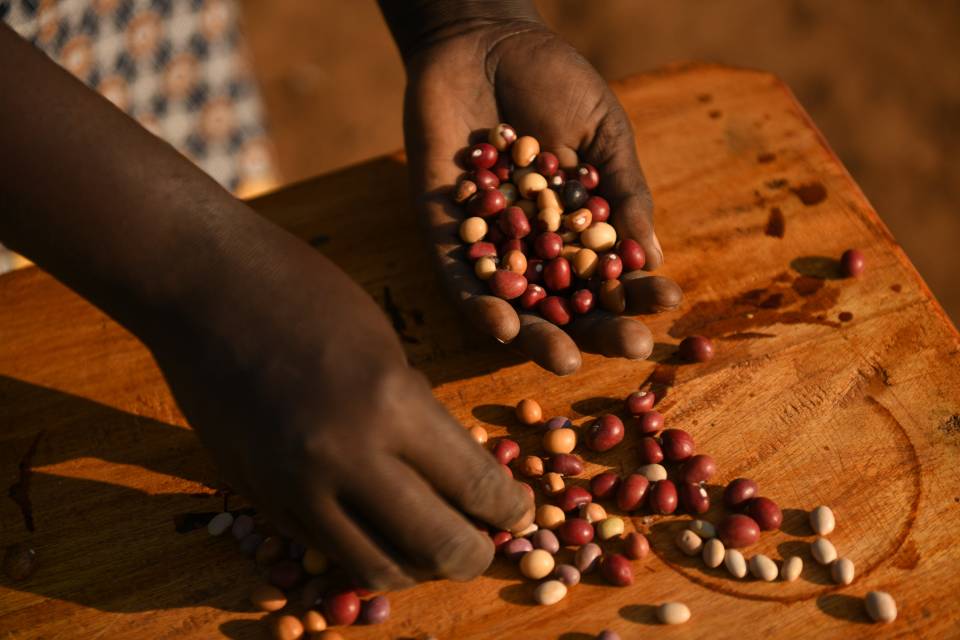

 Nutritious foods like peas and beans (top) aren't usually children's favorites, but teaching them how to cook helps shape their tastes (center). Fried bean flour donuts (bottom) are always welcome. Credit: Thoko Chikondi
Nutritious foods like peas and beans (top) aren't usually children's favorites, but teaching them how to cook helps shape their tastes (center). Fried bean flour donuts (bottom) are always welcome. Credit: Thoko Chikondi
To find out how this transformational shift came about, I worked with the sfhc team for over a decade, documenting Chitaya's work in a film called The Ants & the Grasshopper. Chitaya first met Lupafya when she visited the pediatric nutrition clinic. The older woman, Mama Lupafya as she is known, had supported her in a difficult marriage, into which Chitaya had been coerced. By attending workshops organized by the SFHC, then finding work as one of its trainers, and doing a long and difficult job at home, Chitaya transformed her marriage into one characterized by equality.
There are times when her husband, Christopher Nyoni, struggles to carry his weight around the house. He is afflicted with night blindness, a possible consequence of his own malnutrition early in his life. When it gets dark, he is no longer able to cook or clean and needs help finding his way around the house. But in daylight, he can be seen leaning over a stove, doing laundry or fetching water, all of which are traditionally women's work. It is a sign of Chitaya's success that Nyoni is keen to break with the patriarchal tradition: “I don't want my son to marry like I did,” he told me.
The way forward to transform this and other gender relations in Bwabwa has been to change the culture around food. An initial effort to effect this change involved a door-to-door organization. SFHC members visited households with an expert and taught men how to cook new foods, such as soybeans. After an enthusiastic afternoon gathered around a stove, surrounded by exhortations to do better, the men promised they would change. They did not do it. The SFHC farmers therefore considered an alternative.
A constant concern for men was the social stigma of doing the effeminate work of the kitchen. "What if my friends see me?" Asked Winston Zgambo. After trying to respond to men's embarrassment by offering private cooking lessons, the sfhc team tried the opposite. They organized public cooking competitions for entire families. At Recipe Days all the men were involved in the cooking - and it was fun. By bringing play into behavior change by offering awards and social recognition for success, women have opened up possibilities to change not only food culture, but also power inequalities within the household.
The data from the work of the SFHC speaks for itself. Participation in the program increased children below average weight for their age to higher than average weight. A recent study in which women farmers showed other mothers how to farm led to a range of benefits, ranging from increased dietary diversity for children to lower rates of maternal depression and higher rates of participation. from fathers to household chores.
A PLEASANT FUTURE
Agroecology means caring for not only all humans, but also the ecosystems we depend on. In chemical agriculture, farmers cultivate a single crop. They buy fertilizers, pesticides, herbicides and access to water, and if necessary, they hire pollinators to maximize yield. They use the income from the sale of the crop to pay their bills and debts. In agroecology, farmers find ways not to exterminate pests but to achieve ecological balance. They accept a bit of crop loss while providing habitat for predators and introducing other forms of biological control to achieve a much more robust and resilient ecosystem. In northern Malawi, biodiversity is part of the success of SFHC, as it is in any successful agroecological system. There are more insects, amphibians, reptiles, fish, birds and mammals in these landscapes than in the green and barren deserts of modern monoculture.
In a world of extreme weather conditions, agroecological diversity, both social and biological, is a source of resilience. When Hurricane Ike devastated Cuba in September 2008, it left entire fields littered with trees and debris. In the province of Sancti Spíritus, researchers noticed that farms that followed the principles of conventional agriculture, with large areas of the same type of cultivation, needed about six months to recover from the devastation. But the most diverse farms, with large plantains, fruit trees, perennial crops and a ground cover, were able to recover 80% of their pre-storm capacity in just two months. With the high canopy trees blown out, more light reached other plants in the basement, which grew faster: diversity was a kind of botanical insurance portfolio. Additionally, families living on diverse farms could save trees the day after the storm, when conventional farm workers were away from fields where their labor was seasonally contracted.
 Abundance - of food, companionship, equality, resilience, and joy - is part of the crops of agroecology. Credit: Thoko Chikondi
Abundance - of food, companionship, equality, resilience, and joy - is part of the crops of agroecology. Credit: Thoko Chikondi
Agroecology also enables income resilience. Small farmers generally receive very little support. Instead, they have to manage the cash flow around the farm on their own. Conventional farming generates a large amount of cash at harvest time, which may or may not be enough to pay off debts related to farming and decreases throughout the year. With agroecology, on the other hand, income streams can be increased by means of crops that ripen in leaner periods. In Mexico, for example, a group of farmers supplement their income from corn with countercyclical harvests of honey and coffee.
In the absence of reliable banks, farmers have sometimes turned to creating their own economies and circular exchanges. Many places have local grain stores that help manage crop booms and recessions and hunger. In Bwabwa a few years ago, women set up a circle of credit to help manage cash flow and develop other sources of income, such as selling 'climate change stoves', cooking stalls that require much less wood than conventional wood burning methods. A dozen women pooled their resources and took turns borrowing the money, then repaying it. But the savings circle was shattered by the devaluation of the Malawian kwacha (currency) mandated by the IMF in 2012.
The COVID-19 crisis has made the lives of farmers more difficult. Rising food prices have strained finances, and with resources diverted to emergency mitigation measures so that communities can stay at home and stay safe, people's lives have become better. hard. However, agroecological practices seem to have enabled SFHC villages to withstand the pandemic better than communities outside the project.
FEEDING THE WORLD
What is happening in Malawi and among the hundreds of millions of farmers who are experimenting with new types of agroecology matters to the planet. Agroecology offers the opportunity to do what governments, businesses and aid agencies have failed to do: end hunger. For a while, it might have been easy to respond to agroecology by saying 'this is great, but it will not feed the world'. But farm families who engage in agroecology have improved income and nutrition indicators. From Nepal to the Netherlands , when agroecology is not confined to the field but extends to the home with equality and in community networks of exchange and care, farmers are financially and physically better off.
With the ideas of the World Economic Forum and with the support of the food and chemical industry, the solutions on the table of the UN meeting suffer from a cruel lack of imagination. Nor do they go far enough to remedy or even recognize the environmental and other damage done by industrial agriculture. This supposedly scientific method of growing food is one of the main drivers of climate change. Algal blooms due to nitrogen and phosphate pollution devastate aquatic life. Virgin forests fall into the hands of ranches and plantations. Aquifers are drained for thirsty cash crops. Fertile soils turn to sterile dust as synthetic chemicals kill essential microbes and pesticides decimate the insects on which extended chains of life depend.
Last July, the Rockefeller Foundation reported that while Americans spent $ 1.1 trillion on food in 2019, the additional external costs related to health, the environment, climate change, biodiversity and the The savings associated with the food industry had amounted to $ 2.1 trillion. It is quite a debt that the industry will never have to pay. The rest of the world bears the cost. However, the companies at the origin of this damage are those who propose solutions at the summit.
We know how to do better. Agroecology is more than appropriate, not only because the crops grown are more diverse, but also because the social arrangements around them are more aware of power. The hidden costs of industrial agriculture are precisely those that agroecology makes explicit. His journeys reward the insight of those on the front lines, support the livelihoods of the poor, and protect the planet's biodiversity. Its researchers and practitioners are already working hard, teaching and learning from each other.
Such networks of knowledge unravel the complexes of colonial saviors to which many development experts are still linked. Instead, under agroecology, as Chitaya says, "women can teach men, blacks can teach whites, the poor can teach the rich ." She reflects on the certainties of the struggle to come, especially since the powerful seem to be doubling down on industrial agriculture. “So much has been lost. But it's never too late to change. "
Sources:
Stuffed and Starved: The Hidden Battle for the World Food System - Published in 2008 by Melville House Publishing - Author: Raj Patel.
The value of Nothing: How to Reshape Market Society and Redefine Democracy - published in 2010 - Author: Raj Patel.
The Ants & the Grasshoper - Documentary directed by Raj Patel on the climate crisis and the world food system.
Posted on 2021-10-04 09:00

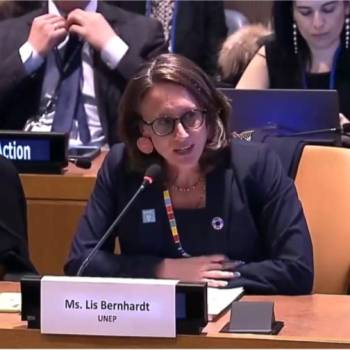

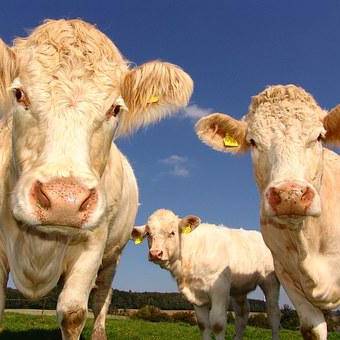



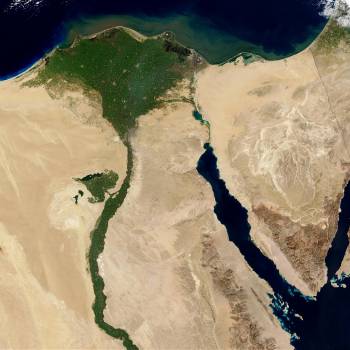
Comments